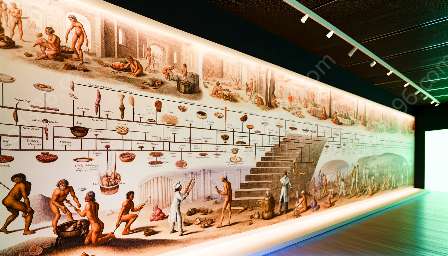Throughout history, culinary tools and utensils have evolved alongside culinary techniques and food culture, shaping the way we prepare, cook, and consume food. This article traces the historical transformations of kitchen equipment and their impact on the art of cooking.
The Early Origins of Culinary Tools
Culinary tools and utensils have a rich history that can be traced back to ancient civilizations. In ancient Mesopotamia, for example, clay ovens and cooking pots were used to prepare meals, showcasing the early innovations in culinary technology. As societies evolved, so too did the tools used in food preparation. The ancient Greeks and Romans, for instance, utilized various utensils such as knives, mortars, and grinders to enhance their culinary practices.
The Middle Ages and Renaissance
The Middle Ages saw significant advancements in culinary tools, with the introduction of more specialized equipment such as spits for roasting meat and cauldrons for cooking stews. These innovations were largely driven by the changing food culture and the increasing sophistication of culinary techniques. The Renaissance period brought about further refinement in cooking utensils, as culinary arts became more esteemed and elaborate.
The Industrial Revolution and Modern Innovations
The Industrial Revolution marked a turning point in the evolution of culinary tools, as mass production and technological advancements led to the widespread availability of kitchen equipment. This era saw the invention of labor-saving devices such as mechanical mixers, peeling machines, and can openers, revolutionizing the way food was prepared and cooked in both domestic and commercial settings. In the modern era, technological advancements continue to drive the transformation of culinary tools, with the introduction of precision cooking gadgets, high-tech kitchen appliances, and innovative cookware materials.
Impact on Culinary Techniques
The evolution of culinary tools and utensils has had a profound impact on culinary techniques, enabling chefs and home cooks to experiment with new cooking methods and styles. The introduction of gas stoves, for instance, allowed for more precise control of cooking temperatures, leading to the development of delicate cooking techniques such as sautéing and simmering. Similarly, the invention of electrical kitchen appliances like blenders and food processors streamlined food preparation, giving rise to techniques such as puréeing and emulsifying.
Relationship with Food Culture and History
Culinary tools and utensils are intrinsically linked to food culture and history, reflecting the culinary traditions and practices of different societies. The design and functionality of kitchen equipment often mirror the specific cooking styles and ingredients prevalent in a particular culture. For example, the traditional woks used in Asian cuisine are an integral part of the region's food culture and cooking heritage. Additionally, the historical developments of culinary tools offer insights into how food preparation and consumption have evolved over time, providing a window into the rich tapestry of human culinary history.
Conclusion
The transformation of culinary tools and utensils is a testament to the dynamic nature of culinary practices, continuously adapting to the changing needs and aspirations of societies. By understanding the historical evolution of kitchen equipment and its relationship with culinary techniques, food culture, and history, we gain a deeper appreciation for the art of cooking and the enduring impact of culinary innovations.

